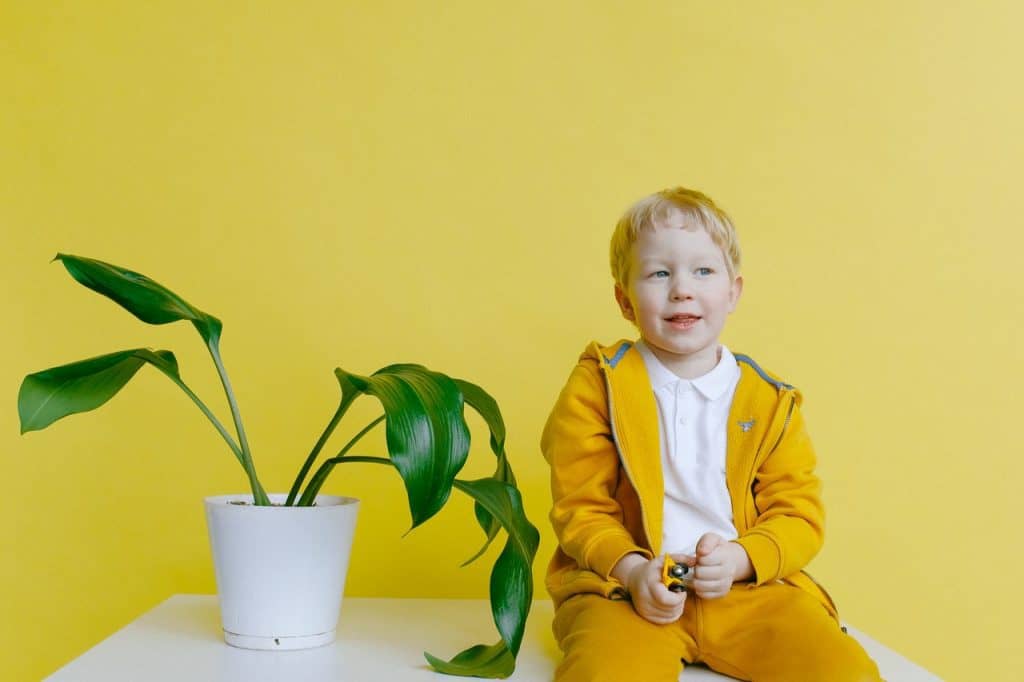Plants for the baby’s room must be chosen with great caution, due to the poisonous properties of some of them. Therefore, it is worth to broaden your knowledge about plants before the purchase. Flowers will undoubtedly add charm to the room and purify the air
The list of “forbidden” plants for a child’s room is long. Although it may effectively discourage us from decorating a child’s room with any plants, it is still worthwhile to opt for flowers in a child’s room. Not all plants threaten the health of our children. What’s more, they can be beneficial for their health. Some can significantly improve the quality of air in the room, which is very important if your child is allergic or suffers from asthma.
An undemanding plant with beautiful, long blooming flowers will be the African violet. The herbaceous plant is also hardy. Three-flowered daisy, papyrus (ciborium), and bigleaf are also worth mentioning.
Ferns are also a great choice. They can stand in the children’s room without any fear. They have special properties. They absorb harmful substances, such as dust mites. They are excellent at filtering and humidifying the air. According to some studies, ferns are able to neutralize radiation produced by TV sets and computers. Additionally, they come in many varieties with an interesting appearance.
However, not only ferns have “health” properties. Plants have the ability to fight toxins. We should definitely not forget about the green decoration beautifying the children’s room.

The biggest danger for children will be, of course, cacti. Due to their spiky structure they are definitely not suitable for decorating a child’s room. The child may not realize the danger and out of curiosity touch an attractive looking plant
Other plants that are not suitable for children include the coral solanacea. It looks beautiful because of the red fruits resembling cherry tomatoes, but unfortunately, a child tempted by the appearance may eat them. Most such plants are poisonous and eating their fruit can end in serious food poisoning and a hospital stay. Therefore, if the child in the store is delighted with the appearance of the plant and persuades us to buy, it is not worth deciding on a flower with fruit, especially if the species is not familiar to us.
There are plants, the juice of which is toxic, and in contact with the skin causes severe allergic reactions and even burns. Of such plants, the most popular are diphenbachia and croton. When a child breaks off a leaf, its hands must be immediately washed thoroughly with soap and water. Contact with the mouth or eyes can cause dangerous irritation and health problems, such as poisoning.
Flowers with a strong pollen and fragrance are also not suitable for our child’s room. Some cause allergic reactions due to pollen, and some children may experience significant sleep problems and persistent headaches and runny noses. So a bad choice would be hoja (in bloom, outside of it it doesn’t give off a smell), jasmine and gerberas (heavily pollenized).
It is also worth remembering that plants such as oleander, ivy, cyclamen, zamokulkas, monstera, philodendron, anthurium and primrose have compounds in their leaves and stems that are toxic to humans, so let’s refrain from decorating the child’s room with them.
Beware of popular stars of Bethlehem (poinsettias), which are a tradition at Christmas time. Due to their toxic properties in stems and leaves, do not put them in your child’s room. However, it is not necessary to completely give up having such a beautiful and unique decoration. Let’s make sure that it is not available to our children in other rooms.
You should also encourage your children to take care of the plants themselves. This will create an ideal environment for learning and enjoying nature, especially in apartment blocks. If you are very worried about your child eating the plant, you can start by offering them a great alternative, which are edible plants such as basil, parsley, chives, or watercress. Before placing an inedible plant in your child’s room, it’s a good idea to talk to your child about its purpose. Our toddler should distinguish edible plants from those that are inedible or harmful. We can do it through play, e.g. reading an atlas about plants
A good observation phenomenon that will surely make our child curious will be planting beans in a plastic, transparent cup. We place the bean by the very edge of the container and cover it with soil. Our little one will be able to observe the stages of bean growth every day.
There are ready-made plant growing kits on the market specifically for children.
Photo by Jennifer Burk/Unsplash